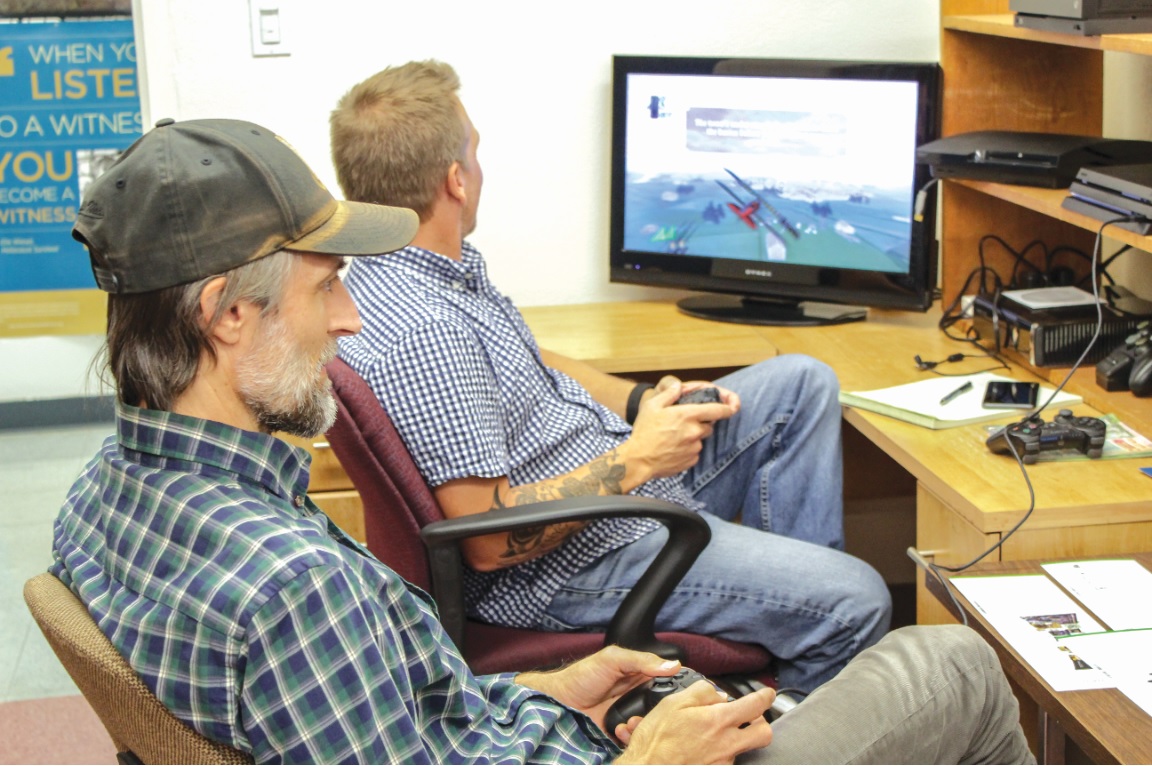From a young age in the late 1970s and early 1980s, Jeffrey Lawler and Sean Smith were immersed in video games. They each sat in front of their scan-lined cathode-ray tube television sets with a wood veneer black and brown box situated atop the TV set. Three lines and the word Atari were engraved on the wood.
With joysticks in-hand, the two grappled their handheld devices, controlling and destroying pixelated tanks on the boxy screens.
“With the Atari and the switching out of the carts, I think there was something both physical and exciting about it,” Smith said. “There hasn’t been a time in my life where I haven’t had a game console of some sort in my home.”
Now working as history lecturers at Long Beach State, Lawler and Smith hope to give a retrospective experience to the newer generations of gamers through the CSULB Center for the History of Video Games and Critical Play. The center, located in FO2-209, boasts a wide range of home video game consoles from the Atari 2600 released in 1977 to the Playstation 4 released in 2013 — as well as tabletop games like Western Legends and Epic.
“This isn’t a center for nostalgia. It really is about playing the games and then thinking about the mechanisms, the structure, the gameplay, the game design [and] the history,” Lawler said. “The idea is to create a space where students and others who are interested in doing research on video games can actually play.”
The concept for the center began in fall 2017, followed by the website’s inception. It wasn’t until this year that the center became a physical space.
According to Smith, the original funding for the center came from a $15,000 grant to the history department with the intent to serve students rather than research interests. The grant assures this by opening to all students. While the lecturers are actively looking for grants to help maintain the center, they also rely on donations to help grow its library of video game histories.
Both Lawler and Smtih implemented video games into their curriculum before the center came to fruition. In teaching History 172: Early United States History, Lawler created an assignment using Twine, an open-source storytelling medium which utilizes user-based decision-making to guide the game.
“Instead of writing a traditional essay, you’re essentially writing a game,” Lawler said. “We’re not asking for students to come away as historians. We just want them to have a sense of history. We’re finding this to be an effective way of integrating both writing and historical skills with something that is a bit more interesting and engaging for students.”
Later, they developed the upper-division course History 306: Playing the Past: Games as Historical Narrative, Public Memory and Cultural Representations, a class that involves analyzing games from a historical standpoint. The final project in the class consists of creating a more in-depth historical video game.
Through class assignments and the center, the lecturers hope students will look at video games as more than just entertainment.
“It’s that immersive nature that connects you to the game,” Smith said. “The ‘critical play’ side of things to really think about … what [games] say about history and how those histories are presented and what [they] say about the public memory [that’s pieced] in these histories.”
The center is the first history-based center for video games in the California State University system. Other California universities’ gaming centers have more traditional focuses such as development, design and business.
“I think for a lot of people, the study of games is, if not strange, the unknown in many ways,” Lawler said. “It’s not huge in history.”
Currently, the center is still in its developmental stages. According to Smith, their website has a couple hundred viewers a week. The lecturers said they are conducting more public outreach and are looking to collaborate with other departments such as arts and computer science.
Marco Murguia Vidales, a senior majoring in art history and studio art, predicts that the new gaming center will only survive if it gains enough student interest. But he does agree with its concept.
“Even if attendance for [the center] may not be high, the history of video games in general and how it grows in the way it affects the world is something that should be known in the way museums stand,” Vidales said. “Sometimes they don’t have the best attendance, but it’s great to have them there regardless.”
The center is open to the public Monday and Wednesday from 2 p.m. to 5 p.m. and Tuesday and Thursday from 11 a.m to noon and 2 p.m. to 3 p.m.




